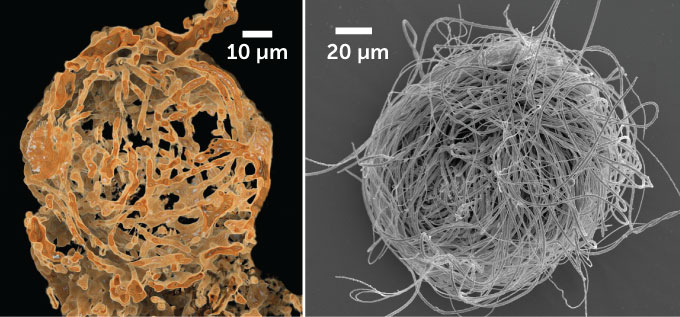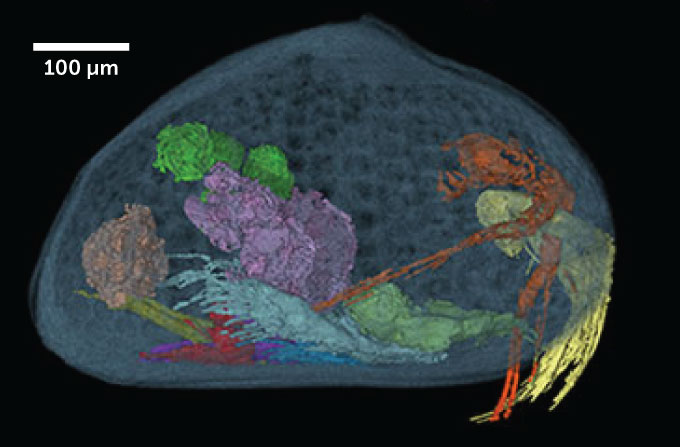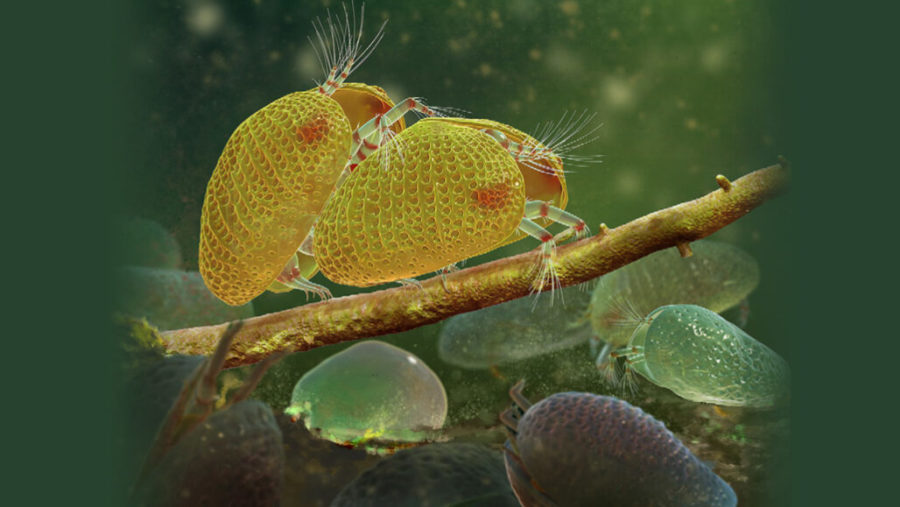An ostracod encased in amber preserves what may be the oldest known fossilized sperm
Ostracods look like nothing more than seeds with legs. But some species of these tiny crustaceans have an outsize claim to fame: giant sperm. In the most extreme case, it can stretch 1.18 centimeters, over three times the length of an adult.
Written Content from Curtis Segarra Science News
A newfound collection of ostracods preserved in amber reveals that megasperm dates back to at least about 100 million years ago during the time of the dinosaurs, researchers report online September 16 in Proceedings of the Royal Society B. A tangle of sperm found inside a female is among the oldest, if not the oldest, fossilized sperm ever found.

A single piece of amber from Myanmar held 39 ostracods, including many from a newly discovered species, Myanmarcypris hui. Using micro-CT scans, Dave Horne, a micropaleontologist at Queen Mary University of London, and colleagues peered inside a few of the tiny shelled animals.
“We knew from looking at the piece of amber with an ordinary light microscope that there were antennae and legs sticking out of the shell, so we were hopeful of finding internal organs,” Horne says. If delicate parts like legs and antennae are preserved, it’s likely that other soft parts are too, he says. “But what we saw … exceeded expectations.”
The layout of internal sex organs resembled that of their modern-day counterparts. And inside a M. hui female, the team found preserved giant sperm packing her seminal receptacles.
Ostracods aren’t the only animal with giant sperm (SN: 7/23/12). Some fruit flies, for example, also rely on megasperm (SN: 5/25/16). In ostracods, giant sperm possibly resulted from “competition between sperms of two or more males trying to fertilize the eggs of the same female,” Horne says. “This must be a highly successful reproductive strategy to have lasted for a hundred million years.” Ostracod sperm must make a long, winding journey from the female’s vagina to her eggs, adds study coauthor Renate Matzke-Karasz, a geobiologist at Ludwig Maximilians University Munich. Spirals in the canal to the eggs make the distance longer than the entire length of the female. Shorter sperm might not be able to make the journey, Matzke-Karasz says.

Finding ancient preserved sperm is rare, as soft tissues often decompose. But a series of recent discoveries — 17-million-year-old ostracod sperm reported in 2014 (SN: 5/14/14) and 50-million-year-old worm sperm described in 2015 (SN: 7/14/15) — has expanded the sperm fossil record. The new find rivals the age of reported fossilized sperm found in crickets from the Cretaceous Period. But Horne, Matzke-Karasz and colleagues argue that the newfound ostracod sperm is “the oldest unequivocal fossil animal sperm.” Read more from Science News
Read other US News and related stories from News Without Politics




